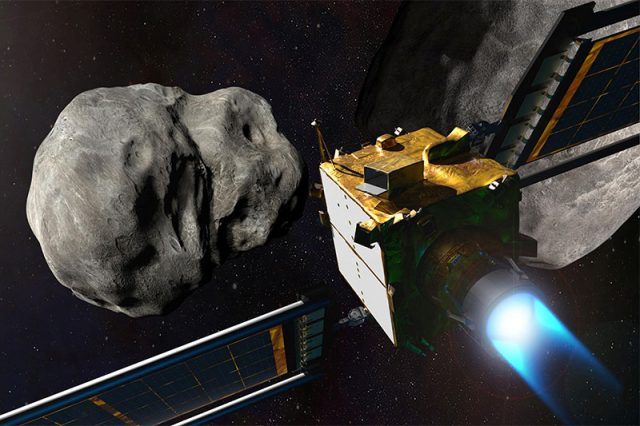
Tech giant Google has a new search gimmick to celebrate the success of the latest space mission.
Science page Science Konek posted a screen record about it and shared it with its followers online.
“Try this. #DART,” the page reads with a rocket emoji.
Try this. #DART 🚀 pic.twitter.com/nBM2uSFCrX
— ScienceKonek (@sciencekonek) September 27, 2022
In the screen record, it could be seen that when the search keyword “double asteroid redirection test” (DART) is entered, it triggers an animated spacecraft that hits the “News” tab of the Search results page.
The page then gets knocked off slightly to the side after it was struck.
This search feature reflects or mimics the space mission of the National Aeronautics and Space Administration—to knock an asteroid named Dimorphos off its course.
This gimmick will also appear when users enter the key phrases “NASA DART mission” and “NASA DART.”
Google normally unveils or launches special animations, artworks, graphics, games and other visuals to feature historical or important events and figures.
NASA’s DART mission, meanwhile, was launched in November 2021 to travel and intentionally hit Dimorphos as part of humanity’s first planetary defense demonstration.
READ: NASA’s DART spacecraft hits target asteroid in first planetary defense test
In its report, NASA said the asteroid has a body that is 530 feet (160 meters) in diameter.
It is orbiting a larger asteroid named “Didymos” that is 2,560 feet (780 meters).
NASA noted that both asteroids pose no threat to Earth.
The full footage of the successful space mission was live streamed on social media via NASA’s accounts.
IMPACT SUCCESS! Watch from #DARTMIssion’s DRACO Camera, as the vending machine-sized spacecraft successfully collides with asteroid Dimorphos, which is the size of a football stadium and poses no threat to Earth. pic.twitter.com/7bXipPkjWD
— NASA (@NASA) September 26, 2022
In the live stream, images taken by DART’s camera showed the small spacecraft colliding into Dimorphos, at 7:14 p.m. EDT (2314 GMT) some 6.8 million miles (11 million km) from Earth.
Cheers quickly erupted from the control room after DART made its impact.
In a statement, NASA Administrator Bill Nelson described how the mission benefits humanity.
“At its core, DART represents an unprecedented success for planetary defense, but it is also a mission of unity with a real benefit for all humanity,” Nelson said.
“As NASA studies the cosmos and our home planet, we’re also working to protect that home, and this international collaboration turned science fiction into science fact, demonstrating one way to protect Earth,” he added.
Earth Shaker, a science group in the Philippines, also posted the news to its followers on social media.
It accompanied its post with a screenshot of NASA’s stream.









